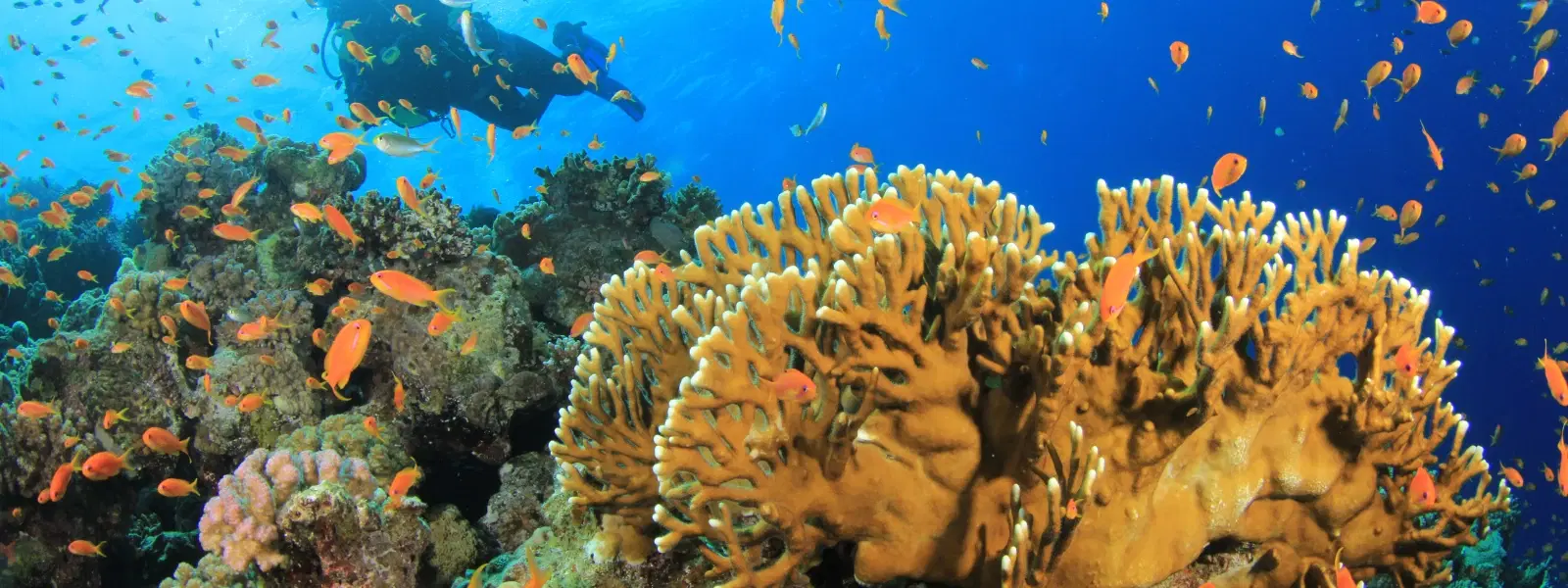
Hotels
•04 min read

Imagine a tropical paradise where vibrant coral reefs meet lush vegetation and an array of unique species calls home. Lakshadweep is a mystical place filled with beauty and life. Known for its rich biodiversity, Lakshadweep offers a rare glimpse into nature's genius. This blog post is a comprehensive FAQ guide to Lakshadweep flora and fauna. Here, you will learn about its unique ecosystems, discover the plants of Lakshadweep, and explore the wildlife in Lakshadweep. Our goal is to make you appreciate the island’s ecological treasures and inspire care for its natural habitat.
Lakshadweep is an isolated set of islands that thrives on its natural barricades. Its geographical location shapes a unique balance of ecosystems. The islands feature impressive coral reefs. These reefs protect the shores and help guide coastal currents. Additionally, the islands have pristine terrestrial habitats that host distinct vegetation. This isolation has allowed endemic species in Lakshadweep to flourish. They are found nowhere else, making the biodiversity of Lakshadweep extraordinary.
Ecological diversity in Lakshadweep includes marine, coastal, and terrestrial layers. Each layer supports diverse groups of plants and animals adapted to tropical conditions. The marine ecosystems brim with colorful Lakshadweep marine life. Meanwhile, coastal areas nurture the resilient Lakshadweep vegetation that thrives in saline climates. On land, small mammals, reptiles, and insects add to the rich fauna of Lakshadweep islands. Understanding the role of endemic species in Lakshadweep is key to appreciating its overall ecological balance.
The flora of Lakshadweep is a blend of tropical vibrance and hardiness. Coconut palms sway in the warm breeze along the coastlines. Jackfruit trees add to the natural charm with their grandeur and sweet fruits. Additionally, the unique Neelakurinji flower stands out with its vibrant blooms. The plants of Lakshadweep are well adapted to salty winds and humid weather. Their deep roots capture moisture and help the ecosystem withstand harsh coastal conditions.
Among the verdant growth, some plants are unique to Lakshadweep. These endemic species carry genetic stories of separation and adaptation. They have evolved to manage saline soil and minimal freshwater. Conservation efforts are in place to protect these rare species. Local initiatives focus on sustainable growth while educating communities about the importance of these plants. Protecting the rare flora is crucial for maintaining the biodiversity of Lakshadweep.

Wildlife in Lakshadweep is as enchanting as its landscapes. The islands are home to small mammals, reptiles, and various insects that thrive in a tropical setting. Birds also play an important role. Migratory and endemic birds add melody to the island’s natural charm. The avian fauna contributes to the ecological diversity. They help pollinate plants and spread seeds, ensuring that the cycle of life continues in these pristine environments.
The ocean around Lakshadweep is a vibrant underwater realm. The islands are blessed with some of the most colorful coral reefs in India. These ecosystems shelter a variety of fish and aquatic life, nurturing Lakshadweep marine life. The coral reefs act as a shield against coastal erosion. They also serve as breeding grounds for numerous marine species. Unfortunately, these delicate habitats face threats from climate change and human interference. Understanding these challenges is key to protecting the future of marine life in Lakshadweep.
Insight Corner: "Did You Know? Lakshadweep is home to some of the most pristine coral reefs in India, which support over 600 species of marine life. These reefs act as natural barriers against coastal erosion, showcasing their ecological and economic importance."
The natural habitat of Lakshadweep is facing threats from several directions. Climate change introduces variability in weather, affecting both flora and fauna. Coral bleaching is a serious issue. It endangers the Lakshadweep coral reefs that shelter marine life. Human activities, such as overfishing and pollution, also put pressure on the ecosystem. To combat these challenges, government initiatives prioritize conservation and sustainable practices. These actions are vital for keeping the biodiversity of Lakshadweep intact.
Sustainable tourism is a way to protect and appreciate Lakshadweep's natural habitat. Visitors can help preserve the island's beauty by choosing eco-friendly activities. Local guides offer tours that respect nature. They educate travelers about the importance of keeping Lakshadweep pristine. Responsible practices include avoiding waste, using biodegradable products, and supporting conservation programs. By engaging in sustainable tourism, everyone can contribute to maintaining the rich ecosystem of Lakshadweep.

The flora includes tropical vegetation such as coconut palms, jackfruit trees, and mangroves, as well as unique endemic species adapted to saline conditions.
The fauna comprises terrestrial animals like reptiles and small mammals, diverse avian species, and a wide variety of marine life flourishing in coral reefs.
Although Lakshadweep does not have an official wildlife sanctuary, its marine ecosystem is under several conservation initiatives.
The coral reefs host species like staghorn, brain, and fire corals, which create rich underwater habitats and support diverse marine life.
It supports a rich web of life, offers coastal protection, and sustains local communities through fishing and eco-tourism.
In summary, Lakshadweep is an extraordinary island paradise that houses an impressive blend of flora and fauna. The region is celebrated for its tropical vegetation and vibrant marine life, which serve as a reminder of nature's intricate design. Its coral reefs protect the coast and nurture life beneath the waves, while terrestrial ecosystems showcase resilient plants and dynamic wildlife. Each species plays a part in sustaining the ecological diversity of Lakshadweep. Climate change and human activities pose challenges, but sustainable tourism and conservation efforts offer hope for preserving this natural haven. By understanding and appreciating these elements, we are inspired to contribute to the safeguarding of Lakshadweep's natural heritage for future generations.